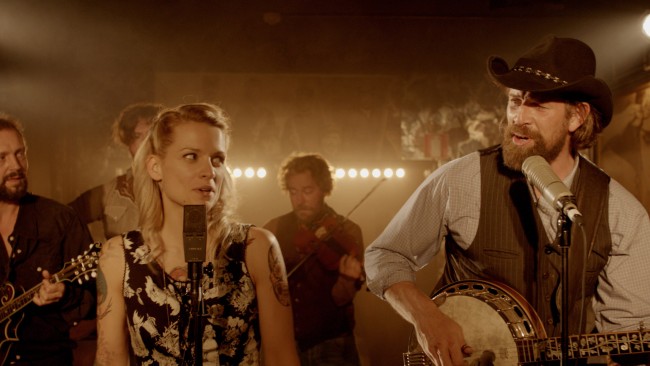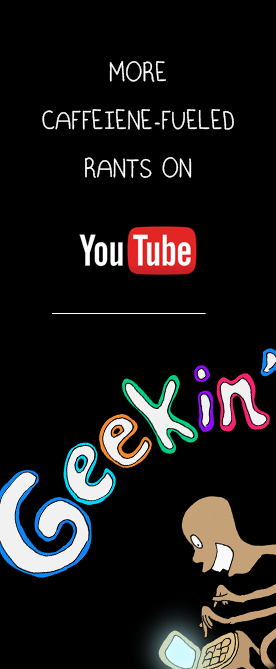The Broken Circle Breakdown
dir. by Felix van Groeningen
One-timer: a movie worth watching from start to finish—that you enjoy and can’t wait to spread the good word about from your social-media-bolstered soapbox—BUT! a movie too overpowering to ever watch again. It could be a movie as emotionally charged and soaked in paranoia as 4 Months, 3 Weeks, and 2 Days or a movie as grim and disturbed—and truly visceral to those with still functioning genitals—like von Trier’s irksome Anti-Christ. They’re great, but torturous movies, and are usually movies that help aid the argument that Yes, movies CAN recreate, subjectively, the raw emotional states of their filmmakers and characters. Or at least, they can come damn close. All the same, that’s mainly why people usually don’t torture themselves for the second go-around. That is…unless you’re into that sort of stuff and err on the side of sadomasochism, in which case, by all means: torture away!
The Broken Circle Breakdown is a one-timer.
Didier (Johan Heldenbergh) loves America. He loves the story of cowboys and hard hands, of music played through seedy, little holes, neon lights, and freight trains and hobos, but not Elvis Presley. Presley never suffered in a fashion grand enough to suit Didier’s idealized notions of the land of broad stripes and bright stars. Presley’s too full of pomp and peacock feathers to get Didier’s engines of Romance revving. That’s Romance with a hard, rolling capital R. Didier loves bluegrass, and he plays it, and belts it. It’s this starry-eyed infatuation with America, and his ear for good tunage, that wrangles Elise (Veerie Baetens) into the Broken Circle fold.
Smattered like a Jackson Pollack canvas, Elise’s skin is covered in tattoos—little reminders and mementoes pieced together like a backstory unburdened by conventional exposition. Elise later reveals to Didier his name irrevocably inked alongside her hip, the letters curled up beside the chamber of a six-shooter gun. Didier and Elise live a dream. In between spurts of wild casbah-rocking they manage to find the time to ride horseback at the loveliest of hours: that magic hour.
For the moment, the dream is right and true: their band’s venues double and triple in capacity, they get pregnant, get married, renovate their house. They get a dog. They have a girl, a beautiful girl—their idyllic relationship finally incarnate. But then, as the film so remorselessly does, it shoves, yanks, and bullies you in and out of the present, where their daughter isn’t doing so well. In fact, she’s got the Big C. Her hair’s in tatters, her face gaunt, and arms tired and limp. The couple enjoys a sliver of reprieve in between hospital stays when they bring their daughter back home from a series of chemo treatments to a surprising rendition of “The Lion Sleeps Tonight.” One night, while playing in the front yard, the daughter finds a dead bird—its neck cracked by flying into glass—and asks her father what happened to it. Didier’s at a loss. You see: Didier’s an atheist but doesn’t have the heart to explain to his daughter what the Circle of Life really means.
Eventually, their daughter returns to the hospital for further treatment, but is unable to pull through.
She dies.
What follows is one of the darkest, slowest, and most wrenching dissolutions of a marriage. Unsatisfied with their shitty spin of Fortune—the seeming pointlessness of their grief—Didier and Elise have no where else to focus their unguided maelstrom of malaise and wrath but on each other. Instead of finding comfort in the only other person who truly understands the heaviness of a childless parent’s embattled soul, Didier and Elise orbit off into two separate realms of grief, creating an abyss of competing sadness. Didier and Elise combat their loss by stuffing the void with other life-affirming causes. Didier picks up a uncharacteristically acerbic view of America and Bush’s stance on stemcell research, always working himself up into a rabid tizzy whenever confronted by Dubya’s shit-eating grin; while Elise gives herself over to the afterlife—in more ways than one—when she finally decides to do something about all the birds that fly into her glass veranda by plastering it up and down with bird-like decals as a warning. She thinks that her daughter’s spirit might’ve reincarnated into that of a bird. Didier laughs at Elise’s princess-like fantasies. He’s brutal about it, brutish, too, as he badgers and harangues Elise about her stupid birds. Didier knows it for a fact: there’s no afterlife. Their daughter is dead. Not up in heaven, but somewhere down in the ground. Science is the ultimate truth, the only means of salvation. Stemcell research: that’s where his daughter’s spirit now lies.
Through editing, the film jumps back and forth between the high-highs of Didier and Elise’s early courting and low-lows of their later marital breakdown. A ruthless juxtaposition that tugs the strings with every temporal jump from mellifluous to cacophonous. Director Felix van Groeningen (The Misfortunates, With Friends Like These)—working off a script by Didier himself, Johan Heldenbergh, who also co-wrote the original play—isn’t above manipulating the audience with his fair share of low cinematic blows. The editing is probably the worst of it. There are smaller moments, too, like Didier’s reaction to the news of Elise’s sudden pregnancy—the way he first acts bothered and ready to flake, only to return some time later with a truck full of gear, sheet rock, and tools to renovate his long-dilapidated house. Walking by Elise, Didier chirps something quippy like, “No baby of mine’s living in a caravan.” Then there’s the outer-body scene of Elise walking around an ICU after overdosing on painkillers, peeking in on a grave conversation between Didier and her doctor. It’s a trickster of a scene, meant to catch you with your pants down, but it’s more than forgivable given the film’s sheer virtuosity. When a movie is this unblinkingly dedicated to trekking across the wasteland of a love affair this tragic—this tempestuous—you have to forgive its methods of getting there. The loss of a child is an earth-shattering event. All rules, all truths, are off the table. This is cinema that goes for the knees—that looks to cap and hobble us—so it’s okay then if van Groeningen wants to occasionally bludgeon us with obviousness. It’s well earned. And suitable, given the subject matter.
Watching people in love tear into each other can be more horrifying than watching those who loathe each other. You don’t divulge your best wrapped secrets to your enemies, but you do to the ones you love. Your loved ones know the worst of you, and they always will. They know those parts of you they can wield like a blunt instrument. Enemies don’t have that same luxury, so it’s less personal, less dirty. Didier and Elise drag each other through the muck. Some time after their daughter’s death, Didier finds Elise napping in their child’s old bed. Didier tells Elise: It can’t go on like this. Elise has sunken into a deep and unresponsive depression—not even a depression. It’s much more severe than that. More like a waking coma. Slowly, like two fighters circling each other, feeling each other out for patterns and pace, Didier and Elise punch about the subject. It percolates within each of them: the bile. They bloody each other senseless, their accusations like meat mallets. He reminds her how she drank booze the first three months of her pregnancy since she didn’t know any better. And she, as if she were tossing a beaker of acid at his face, mentions his family history of cancer—you know, the thing that killed their daughter. Throwing in the white towel, Didier storms out of the room and yells back, “Fuck you bitch!”, and it quakes loud like thunder.
The film is a tight little bubble. The only other character that receives any meaningful screen time is their daughter. Other than that everyone else’s relegated to the side lines for intermittent appearances only. The focus remains sharply on the two leads, untouched by the real world, the music business, the ups and downs of the body art market. Locations don’t vary any more than they do in a play: their home, their gigs, the hospital, and the tattoo parlor. So it’s jarring when a movie so intimate in scope allows Didier to interrupt a show at some grand-looking hall and address the crowd with a vitriolic litany of all the world’s indecencies. The scene plays too operatically to fit in with the rest of the film. It made me think: is anyone in the crowd filming this on their phone? is the band popular enough that this could ruin them? just how successful is the Broken Circle band that they’re playing at such prestigious venues? The world ensconced in Didier and Elise is punctured and popped, and now, a bigger world exists around them dwarfing their misfortunes with wider context. For the moment, their problems don’t seem as important as they once did, their tragedy no longer an aberration.
Mainstream movies have conditioned us to expect our movies wrapped in neat, tidy bows. That no matter what befall our characters—even if it be genocide—that they’ll somehow manage to overcome, persevere, and live happily ever after, especially when romance is involved. But with Didier and Elise it wasn’t meant to be. They marked each other indelibly. She inked him into her skin, and he turned her voice into the heart and soul of his band. Ions and brain chemicals fused and changed when Didier and Elise met each other, when they had their child, when they lost their child, when they lost each other. They transformed, and then transformed again. They were constantly recreating themselves, constantly evolving, until finally swinging back around in full circle to the very beginning: Didier alone. I thought they might pull through, that they had already survived more than enough carnage to see it through to the other side and grow stronger together. But that was wishful thinking. The suffering never ends, but instead swells and collects, bangs around, plucks along, like a surge of noise—of disparate instruments searching for the others’ tunes—and crescendos and crashes into a rumbling pain that will never again lighten from Didier’s chest.
In the film’s final scene, the filmmaker looks to pull the trickiest of tricks and simultaneously sadden and brighten our souls. With his deft handle on the film’s bluegrass soundtrack, van Groeningen achieves the miraculous by celebrating that which is usually mourned by reappropriating the film’s final blow with music. It’s one of the year’s most audacious moments as equally opposing swells of sorrow and jubilation whip the heart about.
The film’s images sear too deeply into the psyche to ever shake off. You’ll be dazzled, confused, and torn for days. I’ve played and replayed the movie in my head many time’s since its screening, so it’s not only a movie I never want to see again—I don’t have to: it’s tucked away, like a scar, in my memory forever.







